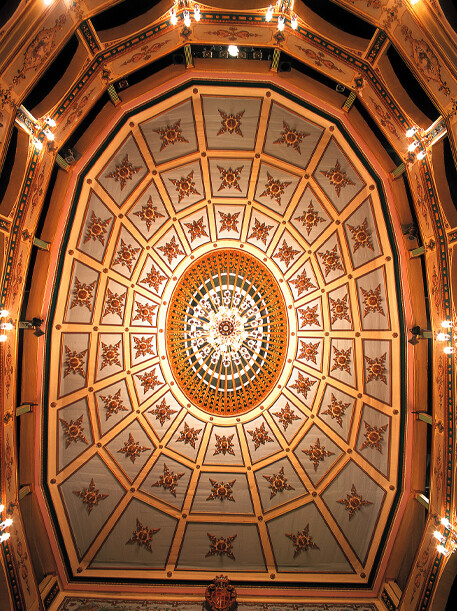The Manoel Theatre in Valletta
and dive deeper
The Manoel Theatre is one of Europe’s oldest running theatres!
Situated on Old Theatre Street in Valletta, The Manoel Theatre is one of the city’s many beloved treasures – a beautifully adorned Baroque theatre built by the Knights of St John, and one of the oldest running theatres in Europe!
If you’re staying in Valletta – the Manoel Theatre is a must-see if you want to absorb the history, culture and artistry of the city all at once. The theatre is open to visitors during the week, check the opening times beforehand to avoid any disappointment. If you’d like to experience the theatre in action, then you could also take a look at the events programme. Being Malta’s National Theatre, you can expect to find many shows being staged throughout the year, ranging from genres of dance to drama, and opera to pantomime!
The history of the Manoel Theatre
Built in 1731 by the Knights of St John, the theatre was personally commissioned by Portuguese Grand Master Fra Antonio Manoel de Vilhena. The Grand Master’s intention was to provide honest entertainment to the public, as is evident from the phrase inscribed on the top of the theatre’s entrance: ‘ad honestam populi oblectationem’. From the outside, the façade to the theatre is modest and plain. Upon entering, however, the décor is rich and textured, with gold leaf, velvet and floral motifs lining the balconies and walls. The theatre was originally built with stone boxes, stone floors and stone benches.
 Ceiling of the Manoel Theatre.
Ceiling of the Manoel Theatre. Manoel Theatre in Valletta.
Manoel Theatre in Valletta.But after the arrival of the British in Malta, the theatre was given a new look. The British changed the shape of the theatre into a horse-shoe, adding an aisle, two side passages, an additional floor and the Proscenium arch above the stage. The ceiling is, perhaps, one of the most exquisite features of the theatre. The atrium underwent restoration after the war, from the 22-carat gliding on the ceiling to the dozens of tiny panels and decorative tier boxes.
During this period, the British also built the Royal Opera House, which drew large crowds and left the Manoel Theatre in disuse. The Manoel continued to be rented out to impresarios, and as the island’s entertainment centre, it played host to many productions for the enjoyment of both local and international audiences. Between 1866 and 1873, the theatre became known as a house for the homeless, with one night’s stay costing only a penny. Despite the troublesome times, however, the Manoel Theatre was never closed – not even during the Second World War.
Although the building was not seriously damaged, like most other buildings, the theatre required careful refurbishment following the war. Local artisans and international experts worked hand in hand to restore the building to its former glory, which included its 22-carat gilded ceiling, tiny panels and paintings that decorate the viewing boxes. The grand reopening of the Manoel Theatre took place in December 1960, with a performance of Coppelia by the Ballet Rambert marking a new chapter in The Manoel’s story.
The Manoel is not a large theatre, by European standards. But, as a venue, it manages to create an intimate, cosy atmosphere that makes visitors truly connect with the performance they are seeing. Whether from the seats in front of the stage, or the balconies above, audiences are never too far from the individuals putting on the show. This magical feeling is one of the ways that the Manoel manages to spellbind its audiences. That, and, of course, the high-quality shows that play out on its stage throughout the year!
 Lobby of Rosselli AX Privilege; 5-star Luxury Hotel in Valletta Malta. Photo Credits go to Viewing Malta.
Lobby of Rosselli AX Privilege; 5-star Luxury Hotel in Valletta Malta. Photo Credits go to Viewing Malta.